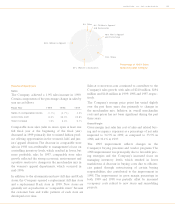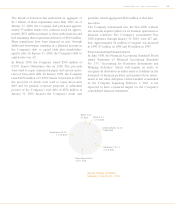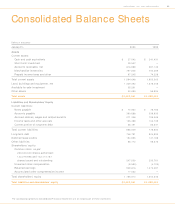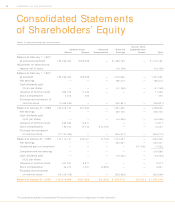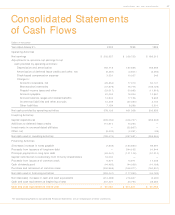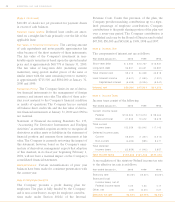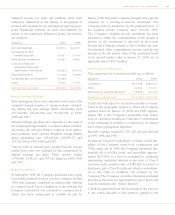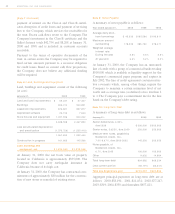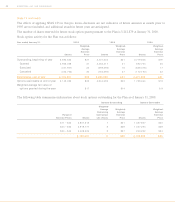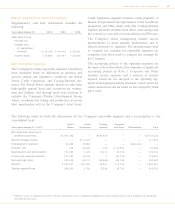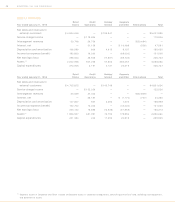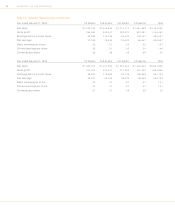Nordstrom 1999 Annual Report Download - page 41
Download and view the complete annual report
Please find page 41 of the 1999 Nordstrom annual report below. You can navigate through the pages in the report by either clicking on the pages listed below, or by using the keyword search tool below to find specific information within the annual report.
39NORDSTROM, INC. AND SUBSIDIARIES
Merchandise Inventories: Merchandise inventories are stat-
ed at the lower of cost (first-in, first-out basis) or market,
using the retail method.
Advertising: Costs for newspaper, television, radio and
other media are generally expensed as incurred. Direct
response advertising costs, consisting primarily of catalog
book production and printing costs, are capitalized and
amortized over the expected life of the catalog, not to
exceed six months. Net capitalized direct response adver-
tising costs were $3,938 and $3,436 at January 31, 2000
and 1999, and are included in prepaid income taxes and
other on the consolidated balance sheets. Total advertis-
ing expenses were $160,957, $145,841 and $115,272 in
1999, 1998 and 1997.
Land, Buildings and Equipment: For buildings and equip-
ment acquired prior to February 1, 1999, depreciation is
computed using a combination of accelerated and
straight-line methods. The straight-line method was
adopted for all property placed into service after
February 1, 1999 in order to better reflect the utilization
of the assets over time. The effect of this change on net
earnings for 1999 was not material. Lives used for calcu-
lating depreciation and amortization rates for the princi-
pal asset classifications are as follows: buildings, five to 40
years; store fixtures and equipment, three to 15 years;
leasehold improvements, life of lease or applicable shorter
period; software, three to seven years.
Store Preopening Costs: Store opening and preopening
costs are charged to expense when incurred.
Capitalization of Interest: The interest-carrying costs of
capital assets under development or construction are
capitalized based on the Company’s weighted average
borrowing rate.
Cash Equivalents: The Company considers all short-term
investments with a maturity at date of purchase of three
months or less to be cash equivalents.
Investments: Short-term and available-for-sale investments
consist of available-for-sale equity securities which are
recorded at market value based on quoted market prices
using the specific identification method. Unrealized gains
(and losses) from changes in market value are reflected in
accumulated other comprehensive income, net of related
deferred taxes. All other investments are recorded at cost
and included in other assets.
Customer Accounts Receivable: In accordance with indus-
try practices, installments maturing in more than one
year or deferred payment accounts receivable are includ-
ed in current assets.
Net Sales: R evenues are recorded net of estimated
returns and exclude sales tax.
Cash Management: The Company’s cash management sys-
tem provides for the reimbursement of all major bank
disbursement accounts on a daily basis. Accounts payable
at January 31, 2000 and 1999 include $7,605 and




